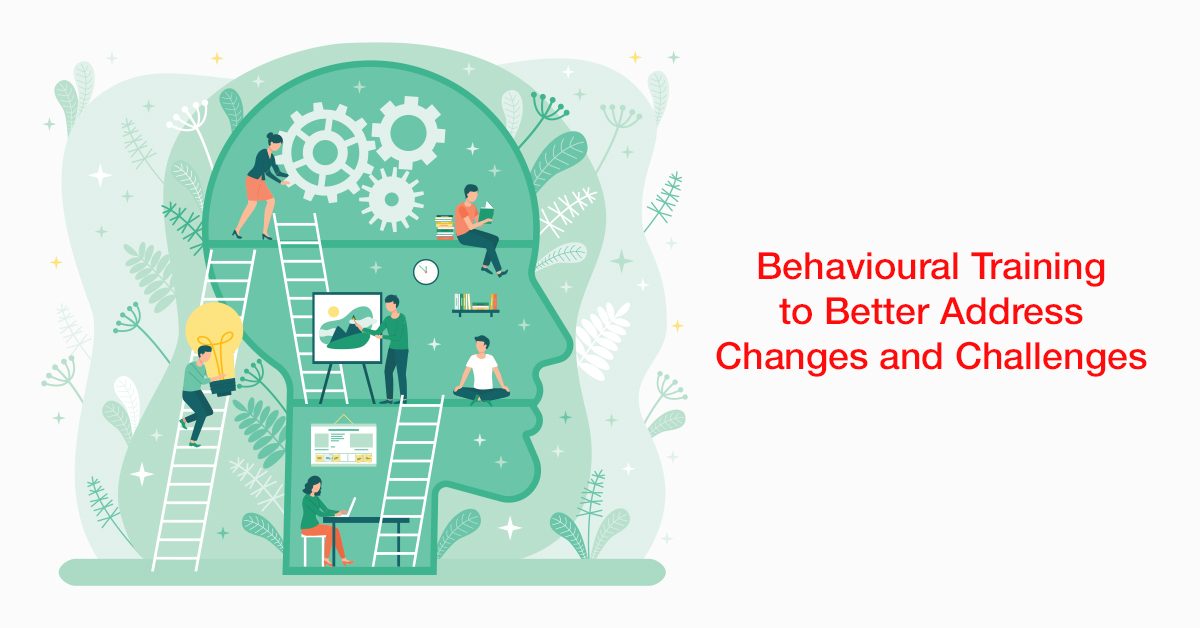
Size, strength, funding, type of business, or mode of working – all of these are important for every organization. But most importantly, regardless of where your organization sits based on the these parameters, planning your training strategy, in this case your online training strategy, will almost always be the same.
So, let’s quickly take a look at how successful online training strategies are planned, and most importantly, what are the steps that you need to follow!
Creating a Successful Online Training Strategy
It’s important to note that some of the most well-planned corporate training strategies have failed. But that does not mean the end of the training journey for such organizations. Instead, they define new ways of appropriately measuring and evaluating their approach and we are going to do the same.
-
Define Your Goals
If engagement is what you’re looking for, then that is a goal. It is important for you to determine or at least know what you want. Irrespective of whether you’re making the course yourself or using an external vendor’s services. Without thoroughly knowing the goals of training your employees in a specific subject or skill, and the reasons behind doing so, your training program can fail even if the learners learnt whatever you taught them. After all, what are you going to use the newly taught skills for?
-
Understand Your Target Audience Needs
Another crucial factor here is knowing what your audience wants. Its common for organizations to restructure their policies surrounding employees from time to time based on the needs of the employees. Similarly, it is crucial that you ask yourself if the training you provide is relevant to what your learners want today. You can also ask for additional clarity about who your learners are, what do they do, how old they are, their level of literacy, education background, and more. Armed with this info, you can easily build just the right training.
-
Simplify Training
One thing to keep in mind throughout the development process is that simplicity is what makes your online training engaging. Complicating any part of the training is a risky move. Think about this – you are building the eLearning program in the first place to simplify an already existing problem. Complicating the course will not help anybody here.
-
Structured Content is Simple
So, talking about keeping things simple, we can’t stress enough that structured content is simple design. Structed content finds itself an integral part of designing eLearning. From being a part of good user experience to keeping it logical for learners to understand the premise. Even missing out on the basics of structuring a course can create confusion amongst learners. Just imagine big block of texts with no titles or chunking, but the text contains information on multiple processes. Progressive disclosure is key here.
-
Subject Matter Experts
Well, your courses are really only good as the content and value it brings to the lives of your learners. And that only means that subject matter experts are important to have on your eLearning development teams. SMEs are responsible for ensuring that the course contains relevant content. Your have two options here – either refer to an external SME or select an SME from your existing talent pool. The latter is a better option because your talent knows your training needs better than any other external SME.
-
Course Flexibility
Make your course accessible. Anything that supports training on-the-go and access to training from anywhere is flexible for modern learners. You cannot expect them to be ok with accepting training on one platform only and be tied to that. Modern learners will quickly drop the idea of taking up such training. Instead, give them as many options as possible and that will make your learners happy.
-
Feedback and Support is Underrated
Feedback is important for your learner’s development. It important for your eLearning courses success as well. Give your learners the right feedback at the right time is important to ensure that knlwedge retention is happening. Giving late feedback or incorrect feedback is just setting them up for more failure with regards to their training and development venture.
-
Make it Engaging
So, we already spoke about a few ways in which you can make the courses engaging. But those are design points to keep in mind while building a course and adhering to them will only increase your engagement metrics. But what about actually including some engaging training elements? Think about interactivity, role playing, simulations, animations, and so on. Now we are talking about engaging the audience on a more direct level. This also is a part of the course design because based on what you choose here, your eLearning is going to look a certain way!
We are Your Partners in Creating a Successful Online Training Strategy!
Follow these tips for a successful online training strategy and ensure that you offer your employees a powerful learning experience. And if you need some expert guidance and support, we are always here to assist you.
Reach us at contact@enyotalearning.com or fill this call-back form to know more. We also provide a learning platform to help organizations host their online training. We call it the Abara LMS. You can avail a 30-day trial of our product at any time. Go ahead and test it. Start 30-day LMS trial.





